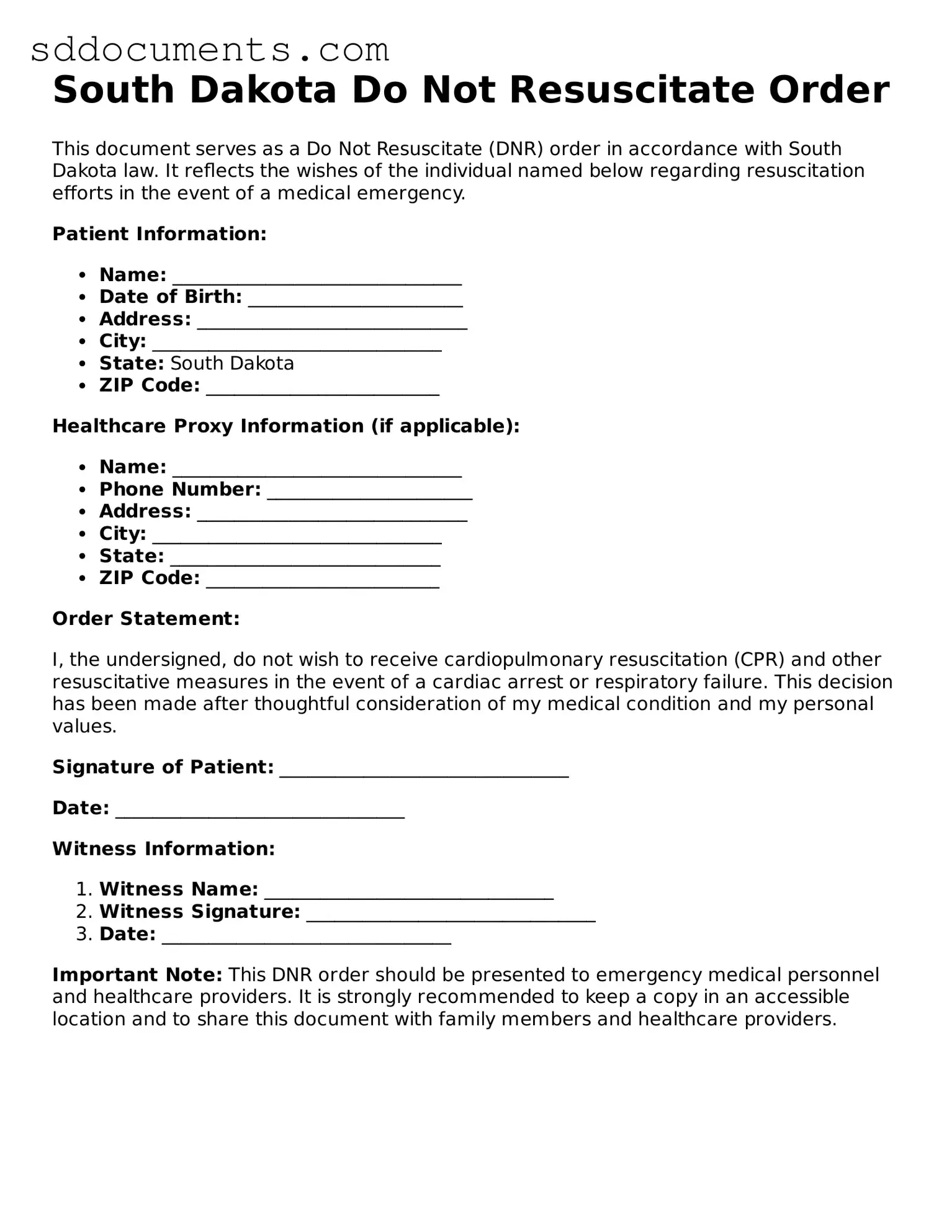Free Do Not Resuscitate Order Template for South Dakota
A South Dakota Do Not Resuscitate (DNR) Order form is a legal document that allows individuals to express their wishes regarding resuscitation efforts in the event of a medical emergency. This form ensures that healthcare providers respect the patient's preferences, prioritizing comfort and dignity. If you or a loved one are considering this important decision, fill out the form by clicking the button below.
Customize Document Online
